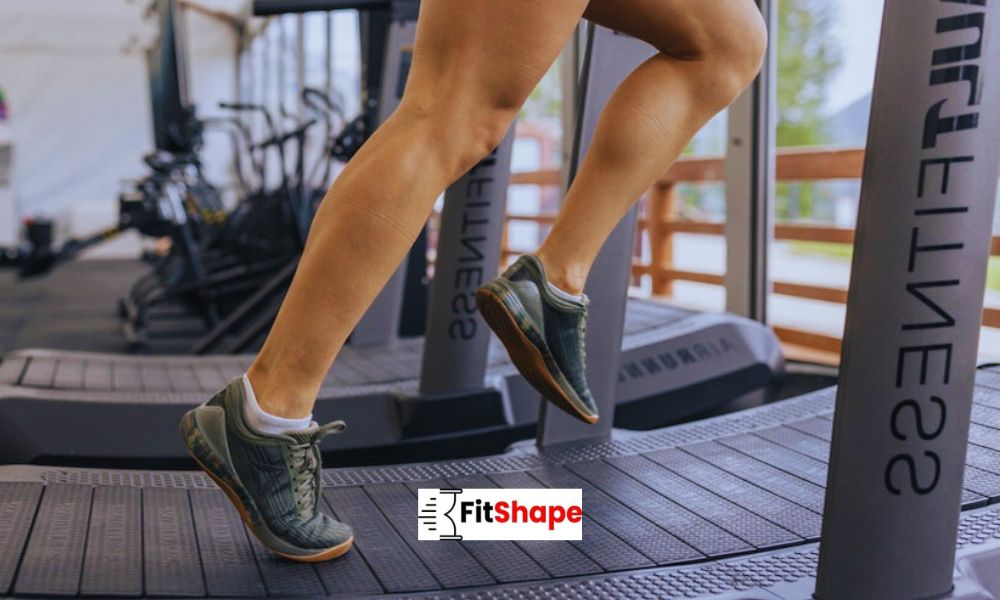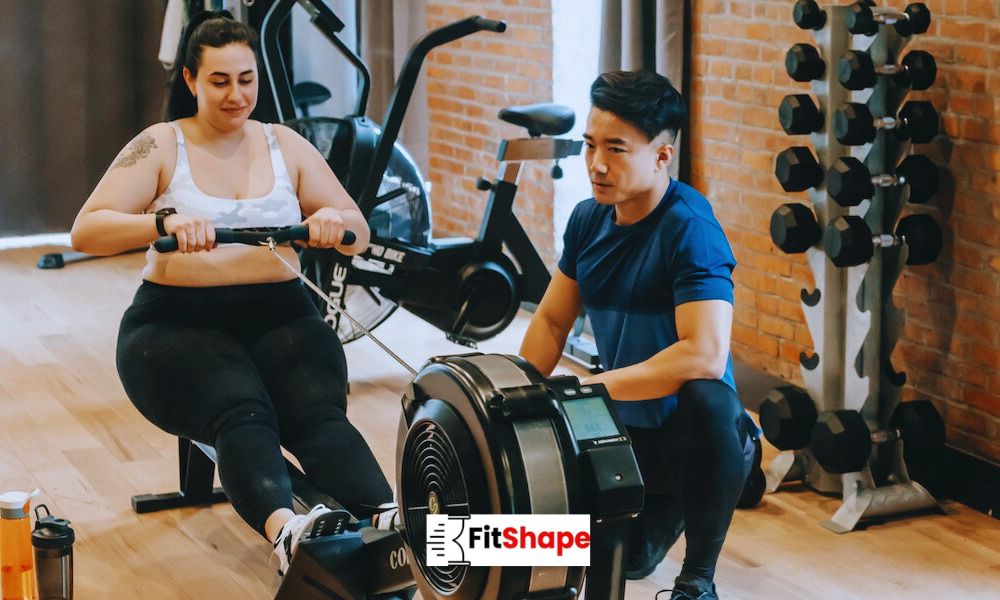When it comes to cardio workouts, there are countless options to choose from. Two popular choices are running and rowing, but which one is truly the better option? Both activities offer a great cardiovascular workout, but they also have their unique benefits and drawbacks.
Cardiovascular exercise is crucial for maintaining a healthy heart and improving overall fitness. Running has long been a go-to workout for many, while rowing has gained popularity in recent years. With so many factors to consider, it can be difficult to determine which activity is more effective for achieving your fitness goals.
If you’re torn between running and rowing as your primary cardio workout, it’s important to understand the advantages and disadvantages of each. Both exercises have their own set of benefits and potential drawbacks, and the choice ultimately depends on your individual preferences and goals.
In this article, we will go into the details of running and rowing to help you make an informed decision about which activity is the better cardio workout for you.

Comparison of Running and Rowing
Running and rowing are two popular forms of exercise that offer different benefits and considerations. One key difference is the muscles worked during each activity. Running primarily engages the lower body muscles, such as the quads, hamstrings, and calves. It provides a great workout for these muscles and can help with building strength and endurance in the legs.
On the other hand, rowing is a full-body workout that engages not only the lower body but also the upper body and core muscles. The rowing motion targets the back, arms, and shoulders, providing excellent strength and endurance training for the upper body. Additionally, rowing engages the core, including the abdominal muscles, contributing to overall stability and strength.
In terms of impact, running is a high-impact exercise as it involves constant pounding on the joints, especially the knees and ankles. This can lead to a higher risk of injury, particularly for individuals with joint pain or previous injuries. Rowing, on the other hand, is a low-impact exercise that puts minimal stress on the joints. It provides a safer option for individuals looking to avoid joint pain or reduce the risk of injury.
Accessibility is another important factor to consider. Running is a highly accessible form of exercise as it can be done anywhere, anytime, with just a pair of sneakers. Whether it’s running outdoors in a park or on a treadmill in your home gym, the convenience of running makes it a popular choice for many.
Rowing, however, requires access to a rowing machine, either at a gym or in the comfort of one’s own home. While this may add a layer of accessibility limitation, rowing offers a consistent and effective workout regardless of weather conditions or timing limitations.

Overview of Running: Benefits, Risks, and Injuries
Running is a popular form of cardiovascular exercise that offers a variety of benefits for both physical and mental health. It is a form of physical activity that can be easily incorporated into daily routines and can be done almost anywhere. Whether it’s running on the treadmill at the gym or hitting the pavement outdoors, running is a versatile and effective form of cardio workout.
One of the key benefits of running is its ability to improve cardiovascular health. Regular running can help lower blood pressure, reduce the risk of heart disease, and improve overall heart health. It also aids in weight management and can contribute to the reduction of body fat.
In addition to its cardiovascular benefits, running also helps to build strength and endurance in the legs and lower body. It is a weight-bearing exercise, which means it can improve bone density and reduce the risk of osteoporosis.
However, running does come with its potential risks and injuries. Due to the repetitive impact on joints, runners are at risk for developing joint pain and injuries such as shin splints, stress fractures, and knee problems. It is important to gradually increase running distances and maintain proper form to reduce the risk of injury.
Overall, running is a popular and effective form of exercise that offers numerous benefits. It can improve cardiovascular health, build strength and endurance, and aid in weight management. However, it is important to be mindful of the potential risks and take proper precautions to ensure a safe and enjoyable running experience.

Benefits of Running for Cardiovascular Health and Mental Well-Being
When it comes to cardiovascular health and mental well-being, running surpasses rowing as an effective form of exercise. Running provides a multitude of benefits for the cardiovascular system, regardless of age, sex, weight, or health risk variables.
Running is a great way to improve the cardiovascular system and reduce the risk of cardiovascular diseases. Regular running helps strengthen the heart, improve blood circulation, and lower blood pressure. It enhances the body’s ability to use oxygen efficiently, leading to better cardiovascular endurance. Running also aids in weight management and the reduction of body fat, which are important factors in maintaining a healthy cardiovascular system.
In addition to its impact on cardiovascular health, running is also beneficial for mental well-being. Research suggests that regular running can lower the likelihood of developing both cancer and neurologic diseases. It has been found to reduce the risk of depression, anxiety, and stress. Running releases endorphins, which are known as “feel-good” hormones that contribute to an improved mood and overall mental health.
Overall, running offers numerous advantages for both cardiovascular health and mental well-being. It provides an effective workout for the cardiovascular system, reduces the risk of cardiovascular diseases, and has positive effects on mental health. Incorporating running into your routine can lead to a healthier, fitter, and happier life.

Potential Risks and Injuries
When it comes to potential risks and injuries, both running and rowing exercises have their own set of concerns. In running, overuse injuries are a common issue. These injuries occur when the body is subjected to excessive amounts of physical activity without enough time for rest and recovery.
It often results from pushing too hard or too quickly without allowing the body to adapt. Common running-related injuries include shin splints, stress fractures, IT band syndrome, and plantar fasciitis.
Moreover, running can put a significant amount of stress on the joints, particularly the knees and ankles. The impact of each stride can lead to joint pain and even damage over time, especially for individuals with pre-existing conditions, like arthritis. The repetitive motion of running can also strain the hip flexors, which can cause discomfort and reduced flexibility.

Overview of Rowing: Benefits, Risks, and Injuries
Rowing is a highly effective form of exercise with plenty of benefits for the mind and body. It offers a low-impact alternative to activities like running, making it ideal for individuals looking to reduce stress on their joints, while still getting a great workout.
One of the key advantages of rowing is its ability to engage multiple muscle groups. Unlike activities that primarily target the lower body, rowing is a full-body workout. It involves the upper body, core, and lower body, making it an excellent choice for those looking to build overall strength and endurance.
Rowing can be done both on water and indoors using rowing machines. Indoor rowing machines, also known as ergometers, are increasingly popular due to their convenience and accessibility. These machines mimic the rowing stroke and allow users to adjust the resistance levels to tailor the workout to their fitness level.
Using an indoor rowing machine provides many of the same benefits as rowing on water. It offers a cardiovascular workout that can help improve heart health, burn calories, and reduce body fat. Additionally, rowing can help increase bone density, as it is a weight-bearing exercise that places a healthy amount of stress on the bones.
Whether you choose to row on water or use an indoor rowing machine, rowing is an effective form of exercise. It offers a total-body workout, engages multiple muscle groups, and provides a low-impact cardio workout. So, if you’re looking for a challenging and efficient form of exercise, rowing may be just what you need.

Benefits of Rowing
Rowing is an incredibly beneficial form of exercise that offers a wide range of advantages for individuals of all fitness levels. One of the key benefits of rowing is its low-impact nature, which makes it an ideal workout option for those who want to protect their joints and reduce the risk of injury.
One major advantage of rowing is its engagement of the upper body muscles. Unlike running or other forms of cardio exercises, rowing machines utilise the arms, shoulders, back, and core muscles, providing a full-body workout. This not only helps to tone and strengthen the upper body but also contributes to better posture and overall muscle balance.
Another advantage is the high cardiovascular burn that rowing provides. Rowing is a highly effective way to raise the heart rate and improve cardiovascular health. It is known to burn more calories per minute than other cardio machines, making it a great choice for those looking to increase their calorie burn and lose weight.
Furthermore, rowing is suitable for all fitness levels. Whether you are a beginner or an experienced athlete, rowing can be adapted to meet your individual needs. By adjusting the resistance and intensity, rowing allows individuals to gradually increase their fitness level and improve their overall stamina and endurance.
Lastly, rowing is an excellent way to build power and endurance. The repetitive rowing motion helps to strengthen the muscles in the arms, legs, and core, leading to improved muscular endurance. This is beneficial for individuals involved in sports or activities that require explosive power, as well as those looking to increase their overall strength and stamina.
In conclusion, rowing offers a multitude of benefits including its low-impact nature, engagement of upper body muscles, high cardiovascular burn, suitability for all fitness levels, and its ability to build power and endurance. Incorporating rowing into your fitness routine can provide a challenging and effective workout that yields plenty of physical and health benefits.

Potential Risks and Injuries of Rowing
Rowing is a highly effective form of exercise that offers numerous benefits for cardiovascular health, muscular endurance, and overall fitness level. However, it is important to understand that like any physical activity, rowing carries potential risks and the potential for injuries.
Rowing primarily engages the upper body and requires a proper form to mitigate the risk of injury. Improper technique or overexertion can strain or sprain muscles, ligaments, or tendons in the arms, shoulders, and back. These areas are particularly at risk due to the repetitive motion involved in rowing.
It is important to maintain proper form while rowing to reduce the risk of injury. This includes maintaining a strong core, using the legs for power, and engaging the back and shoulders in a controlled manner. Ignoring these principles can lead to a wide range of injuries, such as strains in the back, shoulders, or arms.
To prevent injuries, it is important to start slow and gradually increase the intensity and duration of rowing workouts. It is also advisable to consult a fitness trainer who can guide you on the proper technique and ensure you are performing the exercise correctly.
While rowing offers a full-body workout and has numerous benefits for cardiovascular health and strength building, understanding and mitigating the potential risks and injuries associated with this exercise is essential for a safe and effective workout.

Health Considerations for Both Exercises
Cardiovascular health is a crucial aspect of overall fitness and well-being. When comparing running and rowing, both forms of exercise offer significant benefits for cardiovascular health.
Running is a high-impact activity that requires the continuous movement of large muscle groups, primarily in the lower body. It helps improve heart health, increase muscular endurance, and burn calories, making it an effective form of cardio.
Rowing, on the other hand, provides a low-impact, full-body workout that engages the upper body, core, and legs. This type of exercise also enhances cardiovascular health but with a reduced risk of injury compared to running.
Both running and rowing can improve heart health, increase stamina, and contribute to weight loss, making them excellent choices for individuals looking to improve their cardiovascular fitness.
Ultimately, the choice between running and rowing depends on personal preference, fitness level, and any existing health concerns. Both exercises have their unique benefits and can be incorporated into a well-rounded fitness routine to promote cardiovascular health and overall well-being.
Heart Health Benefits of Each Exercise
When it comes to heart health benefits, both running and rowing exercises offer significant advantages. Running is a well-known form of cardiovascular exercise that promotes endurance, strengthens the heart, and aids in fat-burning. It increases heart rate and blood flow throughout the body, improving overall cardiovascular health. Running also promotes the release of endorphins, enhancing brain function and mental health.
On the other hand, rowing is a full-body workout that engages both upper and lower body muscles simultaneously. It increases heart rate and enhances cardiovascular endurance, leading to improved heart strength. Rowing also helps burn calories and fat, contributing to weight loss and metabolic health.
Both running and rowing are low-impact exercises, reducing the risk of joint pain and injuries associated with high-impact activities. However, rowing is particularly beneficial for joint health as it provides a low-stress workout that strengthens the bones and improves bone density.
Therefore, both running and rowing offer ample heart health benefits. While running focuses more on endurance and fat burning, rowing provides a total-body workout with added joint benefits.

Impact on Lung Capacity and Blood Flow
Running and rowing have significant impacts on lung capacity and blood flow. Both exercises improve lung function and increase the flow of oxygen-rich blood throughout the body, resulting in numerous benefits for overall health and fitness.
Running, being a cardiovascular activity that involves continuous movement, requires increased oxygen intake, leading to improved lung capacity. Regular running workouts gradually expand lung capacity, allowing for more efficient oxygen exchange and greater endurance. The increased demand for oxygen also stimulates an increase in blood flow, delivering more oxygen-rich blood to the muscles and tissues.
Likewise, rowing is a highly effective form of cardio exercise that also enhances lung capacity. The repetitive and rhythmic motion of rowing necessitates deep breathing, engaging the lungs and strengthening respiratory muscles. This deeper breathing pattern improves lung capacity and enhances the ability to take in and utilise oxygen.
In addition, rowing requires a significant amount of muscle engagement throughout the body. The muscular effort involved in rowing increases blood flow, delivering oxygen-rich blood to the muscles being worked. This increased blood flow helps remove waste products, such as carbon dioxide, from the muscles, further enhancing overall lung function.
Both running and rowing have positive effects on lung capacity and blood flow. Running improves lung capacity and increases oxygen delivery to the muscles, while rowing engages the respiratory system and promotes efficient oxygen exchange.
Effect on Muscle Endurance & Strength Building
Both of these exercises have a positive impact on muscle endurance and strength building, but they target different muscles due to the nature of the exercises.
Running primarily focuses on the lower body, making it an effective form of exercise for strengthening muscles such as the quadriceps, hamstrings, glutes, and calves. The repetitive impact of running helps to develop strong leg muscles and improves endurance in these muscle groups.
On the other hand, rowing engages the entire body, providing a full-body workout. It strengthens muscles in the arms, shoulders, back, and core. The pulling motion of rowing works the muscles in the arms and shoulders, while the pushing motion engages the muscles in the legs. Rowing also helps tone the abdominal muscles, contributing to a stronger core.
Both activities require muscular endurance, as they involve sustained effort over some time. However, rowing provides a more comprehensive engagement of the muscles throughout the body, resulting in improved overall strength and muscular endurance.